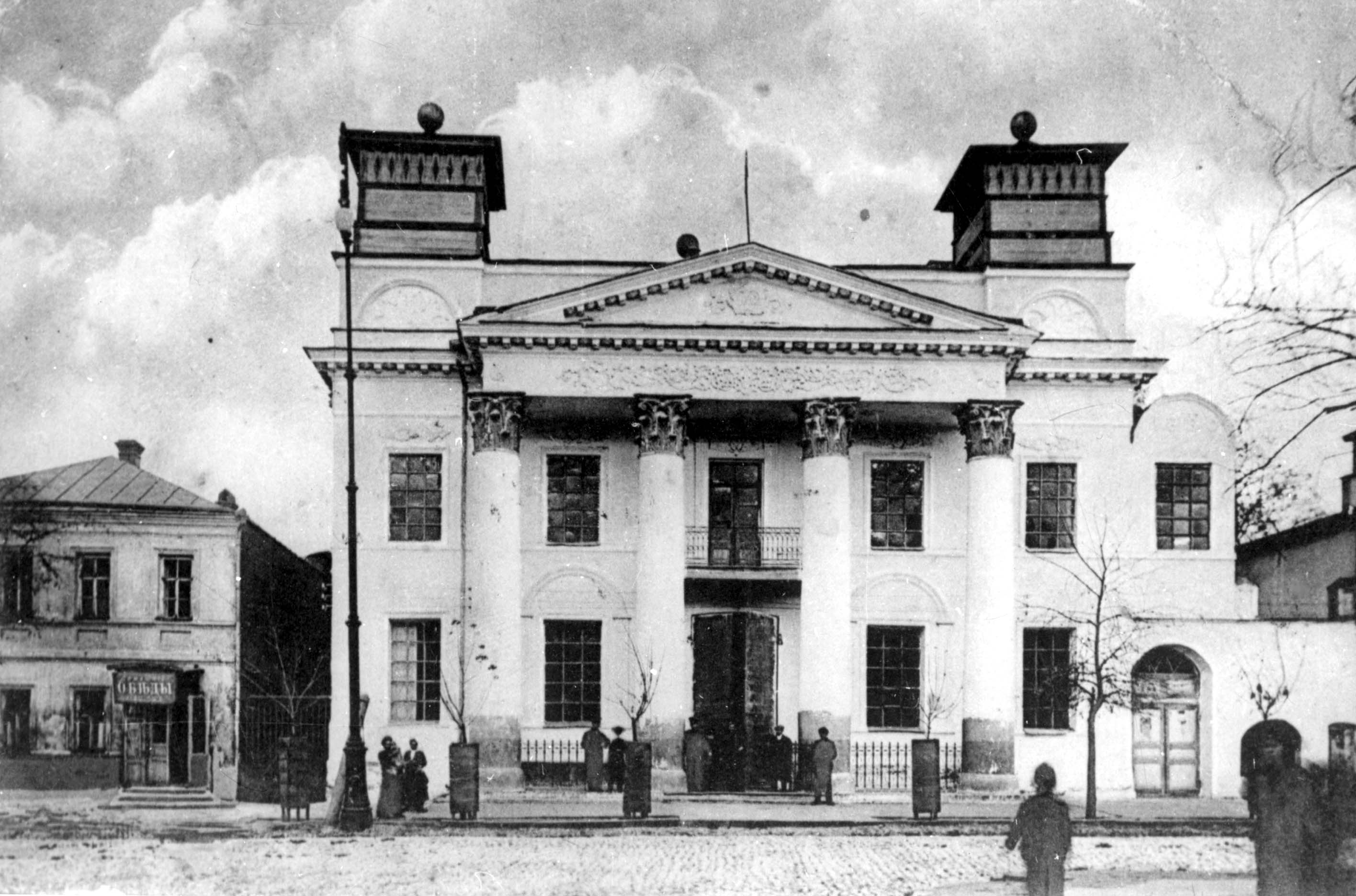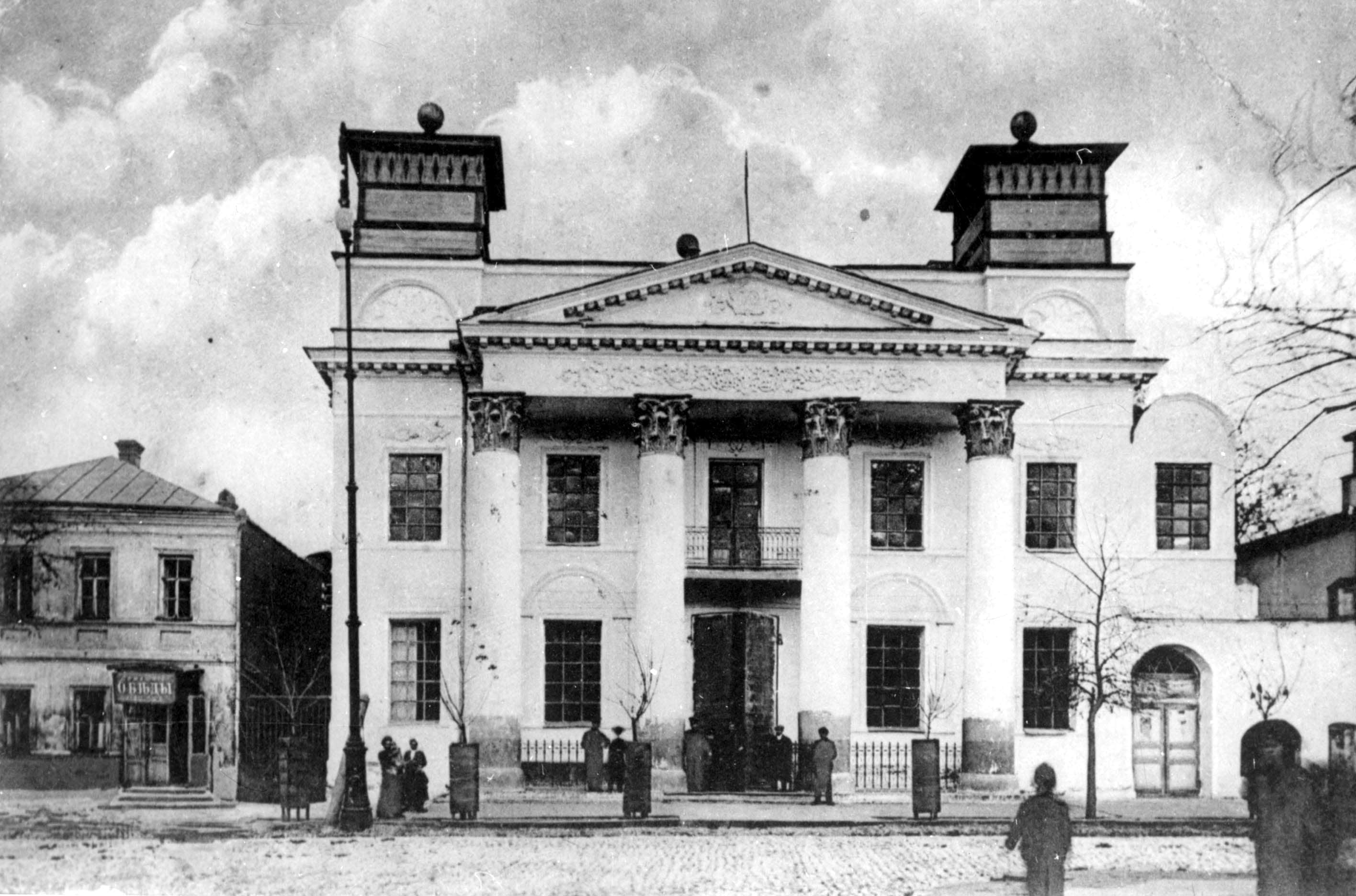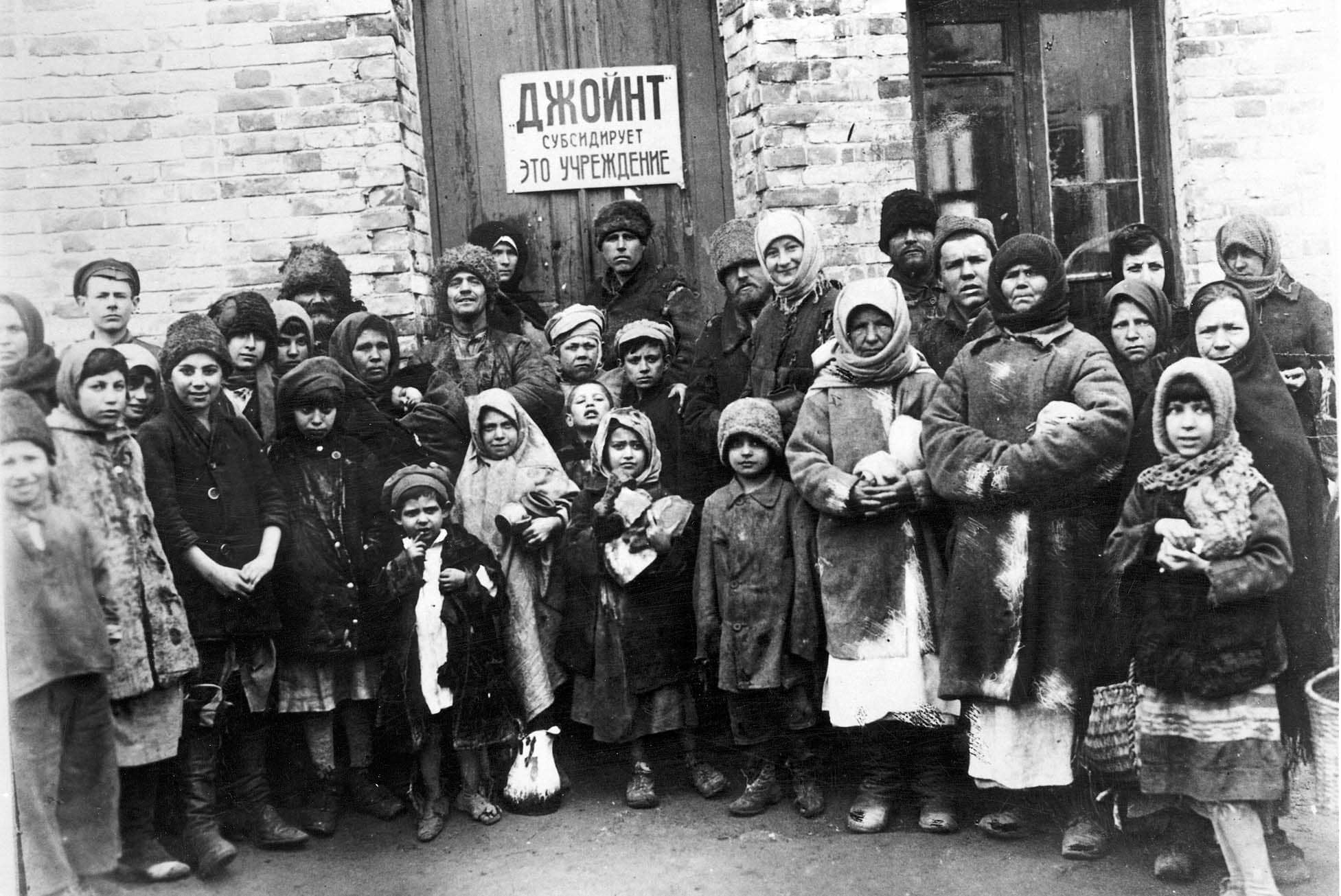

Dnepropetrovsk

At the end of the 19th century about 40,000 Jews lived in the city, comprising one third of the total population. Most Jews were merchants, peddlars, artisans, or suppliers for the Russian army and government bodies.
At the turn of the century Yekaterinoslav had a thriving communal life, with several educational facilities, both secular and religious, including three talmud torah schools, a high school for Jewish girls, several public and private schools, as well as a number of charity institutions and a Jewish hospital. Yekaterinoslav had 38 synagogues and prayer houses, including one of the Karaite community.
Yekaterinoslav was also an importnat center of the Habad Hassidic movement. From 1907 to 1939 Levi Yitzhak Shneerson of the Lubavich Hassidic dynasty served as rabbi of Yekaterinoslav (Dnepropetrovsk). In the late 1920s and early 1930s a unofficial Lubavich yeshiva operated in Dnepropetrovsk.
At the end of the 19th century Yekaterinoslav was a hub of Jewish political activity, including a strong Zionist movement with such prominent leaders as Shmaryahu Levin and Menachem Usyshkin living and working in the city, as well as a branch of the non-Zionist and socialist Bund.
In 1883 and 1905 there were pogroms in Yekaterinoslav. During the 1905 pogrom 66 Jews were killed and 125 wounded and Jewish homes and shops were looted. To protect the Jewish population a self-defence organization was established in 1904 with 600 members, including several non-Jews.
The deputy speaker of the Israeli Knesset in the 1950s and 1960s Beba Idelson, an early Israeli feminist, and Oscar Gruzenberg, the famous Russian-Jewish lawyer who defended Menachem Mendl Beilis when he was accused of ritual murder, were born in Yekaterinoslav.
During World War I many Jewish refugees from the western regions of the Russian Empire arrived in Yekaterinoslav. However,most of them left the city in the early 1920s.
The Jews of Yekaterinoslav suffered greatly during the revolutionary years and the civil war in Russia. They were attacked between 1917 and 1919 by Red troops, by Denikin's White troops, and by various local bands. During the pogroms of those years hundreds of Jews lost their lives, many Jewish women were raped, and much Jewish property was looted.
In 1926 the name of the city was changed to Dnepropetrovsk after the prominent Bolshevik Grigiry Petrovskiy.
During the Soviet period Jewish organized communal life in Yekaterinoslav-Dnepropetrovsk virtually ceased to exist. Most of the synagogues in the city were either closed or turned into clubs or kindergardens. All non-Soviet political activities, including Zionist ones, were halted by the authorities in the mid-1920s.
In the late 1920s and 1930s Dnepropetrovsk had several Yiddish schools and a technical college with teaching in Yiddish, as well as a court divison with deliberations in Yiddish. In the 1930s there was also a Yiddish theater in the city. In 1931 Jewish agricultural settlements around Dnepropetrovsk were combined into the Stalindorf Jewish Ethnic County.
In the Soviet period the social structure of Dnepropetrovsk Jews changed significantly. During Soviet industrialisation in the late 1920s and 1930s Dnepropetrovsk attracted many new residents due to the establishment there of important industrial, scientific, and cultural centers; the city's total population reached more than half a million. In 1939 Dnepropetrovsk's Jewish populations was 89,529, which amounted to 18 percent of the total population. Many Jews of the city found employment in the new industries.
Dnepropetrovsk was occupied by the Germans on August 24, 1941. Most of the Jews succeeded in leaving before the arrival of the German troops. The Jews who remained in Dnepropetrovsk were joined by Jews from the surrounding localities who sought refuge in the big city. Immediately after the beginning of the occupation maltreatment, looting, rapes, and killings of Jews started. Not long afterwards some Germans killed a group of Jews who were praying on Filosofskaya Street. The Jews were ordered to wear white armbands with the Star of David on the sleeves of their clothes. At the end of September or the beginning of October, 1941 Einsatzkommando 5 of Einsatzgruppe C murdered 179 Jews in Dnepropetrovsk. On October 2, 1941 the German authorites required the Jews of Dnepropetrovsk to pay a fine amounting to between twenty-five and thirty million rubles that was to be paid in several installments, the first - on October 12, 1941. In order to collect this amount a special "communal committee," a kind of a Judenrat headed by a lawer named Grinberg, was established. This sum was, in fact, never paid since most of the Jews in Dneprovetrovks were murdered.
on October 13-15 (13-14, according to some sources), 1941. At least 10,000 Jews of Dnepropetrovsk were murdered on the southern outskirts of the city. Jews who survived this massacre were murdered, mainly at the end of 1941-beginning of 1942, by various units of Einsatzgruppe C. In February 1942 only 700 Jews remained in the city. They were imprisoned in a labor camp at the Fedoseevskiye barracks and, then, murdered in 1943. According to various sources, a total of about 20,000 Jews were murdered in Dnepropetrovsk during the German occupation. Most of the bodies of the murdered Jews were burned in October 1943 by Sonderkommando 1005, whose purpose was to eliminate the traces of the Nazi crimes.
Dnepropetrovsk was liberated by the Red Army on October 25, 1943.



